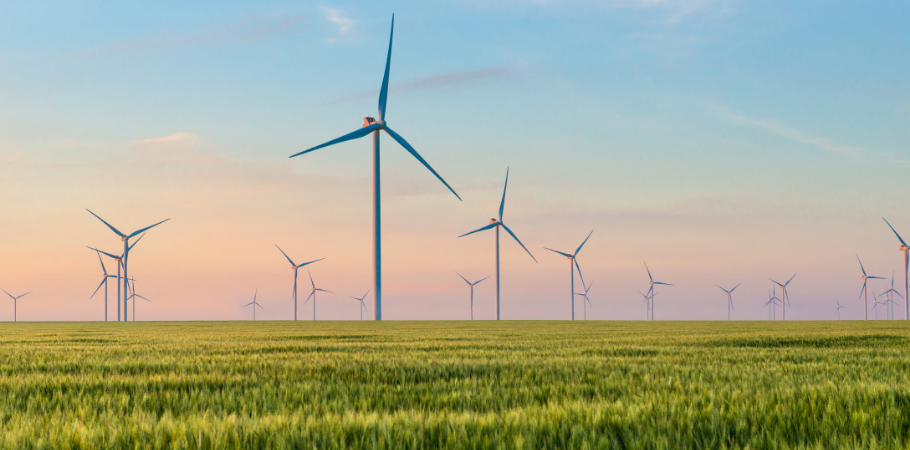
The use of green energy and renewable energy has been meeting the wishes of society towards sustainable national development.
At the same time, under the impact of the goal at the 26th Conference of the United Nations Framework Convention on Climate Change (COP26), countries must implement the use of this energy in a meaningful and strategic way in the process of socio-economic development.
This article presents the key difference between green energy and renewable energy and the current situation of them.
What is Green Energy and Renewable Energy?
Green energy represents the energy sources that have the least impact on the environment. These types of energy sources don’t emit harmful carbon emissions. This means they’re effective in helping you reduce your carbon footprint. Some examples of green energy include electricity produced from solar, wind, geothermal, and other low-impact sources.
Renewable energy is a new form of energy that can generate electricity using the power of nature. To better understand what renewable energy is and how it works, let’s look at some examples of renewable energy sources:
- Solar energy: Solar power generation uses sunlight to generate energy. Specifically, by exposing sunlight to a device called a “solar cell,” it creates a flow of electricity and obtains electricity from the flow of electricity.
- Wind energy: It works by harnessing the movement of air to rotate the propellers on large wind turbines. The turbines then convert the kinetic energy of the rotational motion into mechanical energy and finally electricity.
- Hydropower: One of the first sources of energy used to generate electricity was hydropower. In this process, the force of the flowing water will rotate the blades in the turbine. Then it will rotate the generator to generate electricity.
- Geothermal energy: Geothermal energy comes from heat located deep inside the earth. It works by drilling wells into the ground, which then allows steam or water to rise to the surface and power the turbines that generate electricity.
- Biomass energy: Biomass is a renewable material derived from plants and animals. Some common sources of biomass include wood, agricultural crops, and municipal solid waste. They can convert biomass into energy using a variety of methods. And the most common approach is to burn biomass to heat buildings or power steam turbines that generate electricity.

The Role of Green Energy and Renewable Energy
Firstly, the use of green energy and renewable energy sources helps the living environment to be fresh, ensure the best conditions for quality of life. Since then, people living in that environment also enjoy the best living conditions. And it also maximizes the quality of life. At the same time, it can minimize the adverse impact of climate change on human habitats.
Secondly, using sources of green energy and renewable energy to aim for a hygienic and safe environment, ensuring the strength of the people, as well as ensuring the environmental landscape. From there, creating a premise for rapid and sustainable socio-economic development. The ultimate goal is to ensure the right of human beings to live in a healthy environment.
Thirdly, the use of green energy and renewable energy sources is an inevitable need to complete the targets in the commitment to net zero emissions at the COP26 Conference. Since then, it has made an important contribution to ensuring energy security due to the rapid decline of old energy sources such as oil and gas, coal, and minerals.
Thus, in the correlation between the use of green energy, renewable energy, there is a close relationship with each other. However, there are also some differences between them.
The Differences between Green Energy and Renewable Energy
Let’s take a look at the differences between renewable energy and green energy. Renewable energy refers to natural energy (solar, wind, hydro, geothermal, biomass). Green energy, on the other hand, is electricity that is produced using renewable energy and has a low impact on the environment.
In other words, renewable energy refers to “all energy that uses the power of nature,” and green energy refers to “electricity obtained from renewable energy.” This is the difference between the two.
The Current Situation
Responding to climate change and environmental protection are issues of special significance, great influence, relationships, mutual impacts, and decisions on the sustainable development of the country. It is the basis for planning socio-economic development policies, ensuring national defense, security and social security.
Currently, climate change is negatively impacting many countries’ socio-economic development in many fields. Not only that, the extent of the impact of climate change depends a lot on human environmental protection.
Therefore, many countries are rapidly implementing environmental protection from the use of green energy and renewable energy. In addition, at COP26, countries in the region are committed to achieve the goal of net zero emissions by 2050. This is an important force for them to quickly promote the use of environmentally friendly energy sources in production activities.

These energy sources make an important contribution to the development of economic, social and environmental goals. Moreover, they also make an important contribution to ensuring human rights. The use of green energy, clean energy, and renewable energy sources contributes to promoting the implementation of the goals at COP26 quickly and accurately as committed.
Conclusion
Renewable energy refers to energy that uses the power of nature, such as solar and wind power. Green energy, on the other hand, is electricity produced using renewable energy. Renewable energy has high expectations as an alternative to fossil fuels because there is almost no concern about CO2 emissions. The same is true for green electricity that uses it. Using these energy sources is contributing to combating climate change, minimizing the impact of climate change on the environment; thereby towards green development and sustainable development.
Protecting the environment in the process of responding to climate change is the responsibility of all people, this is also a driving force to promote life and improve the quality of life of people.
See more: Green Software: How Can Achieve Sustainable Future


